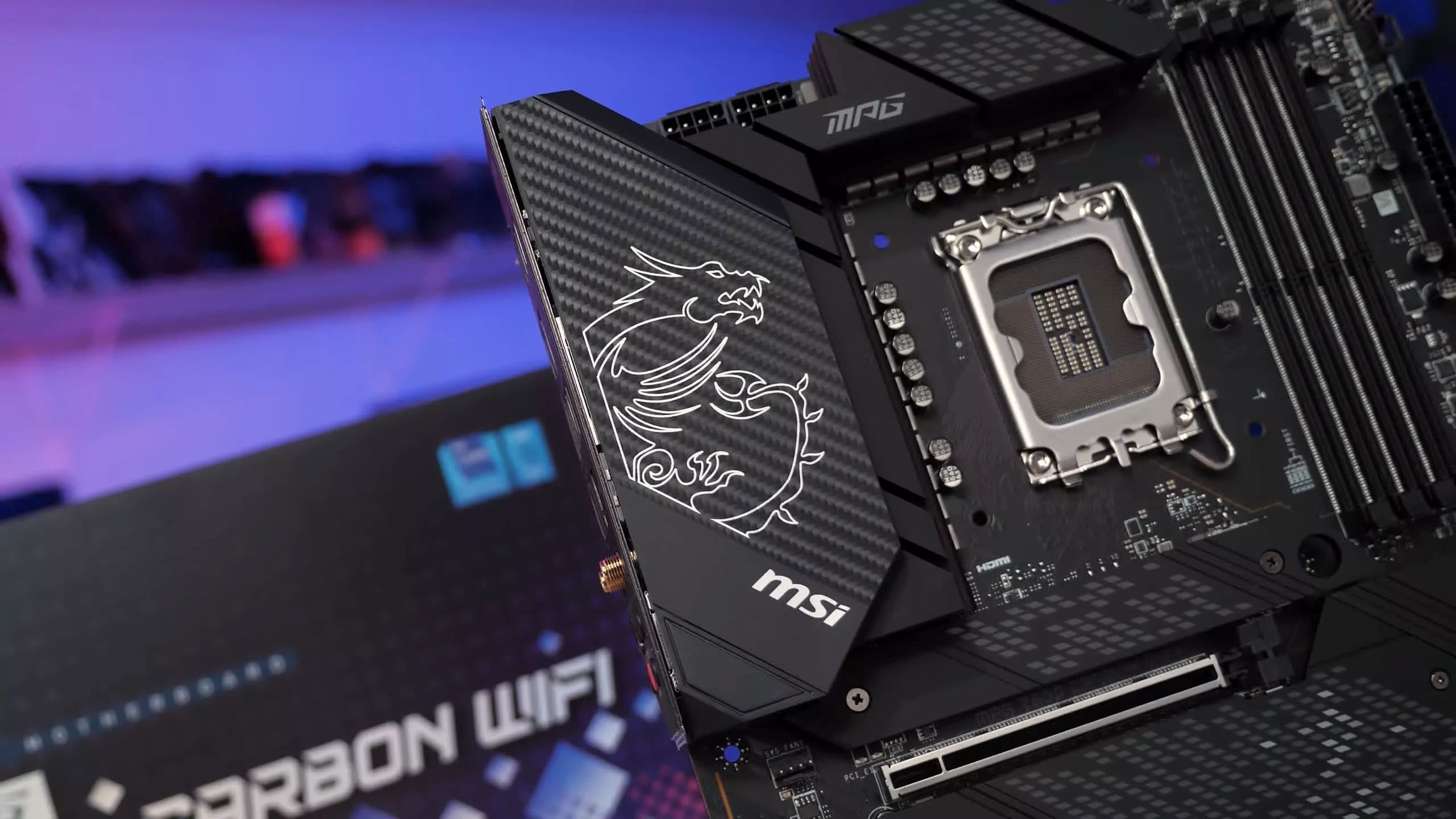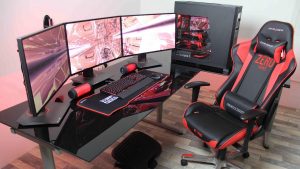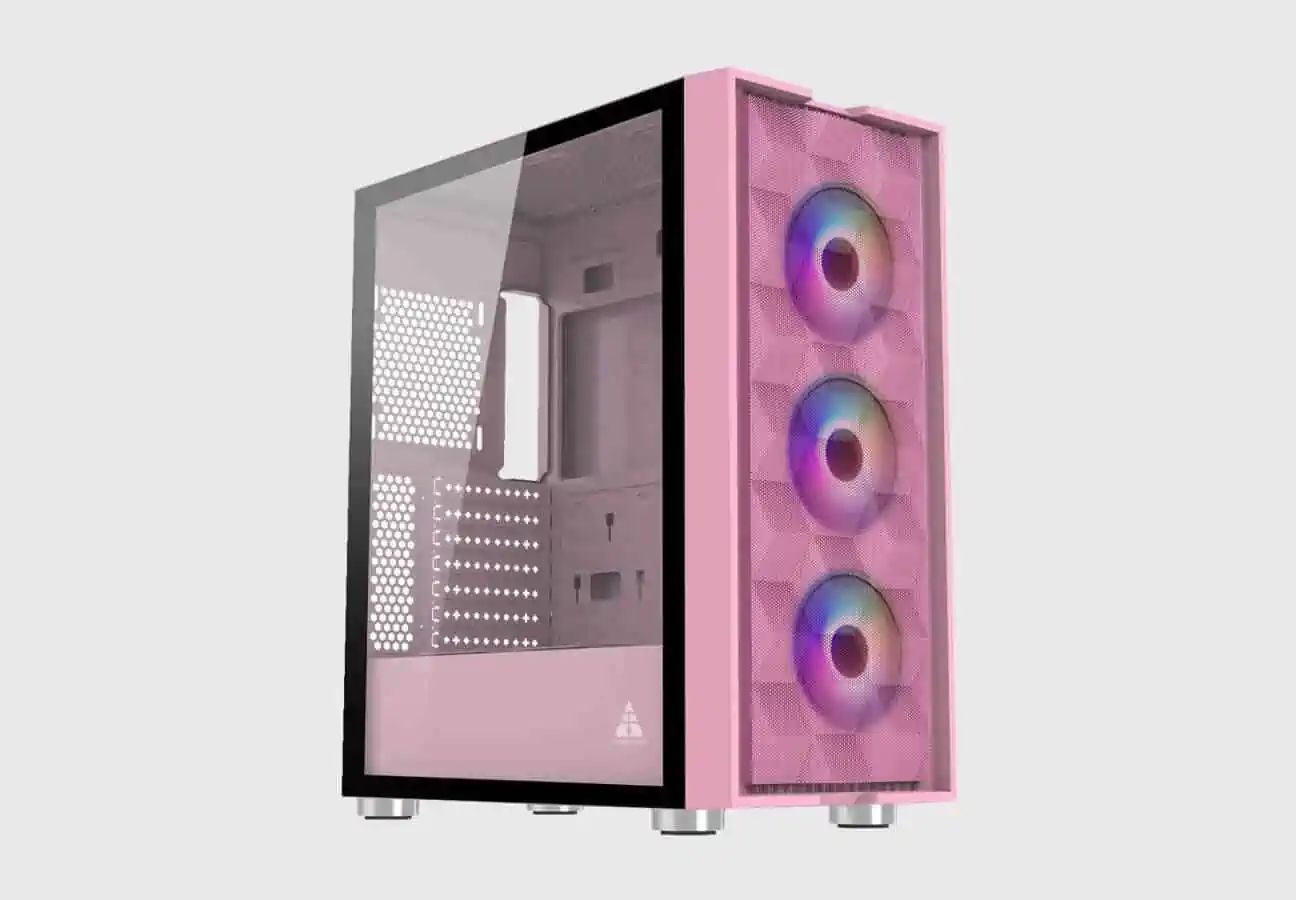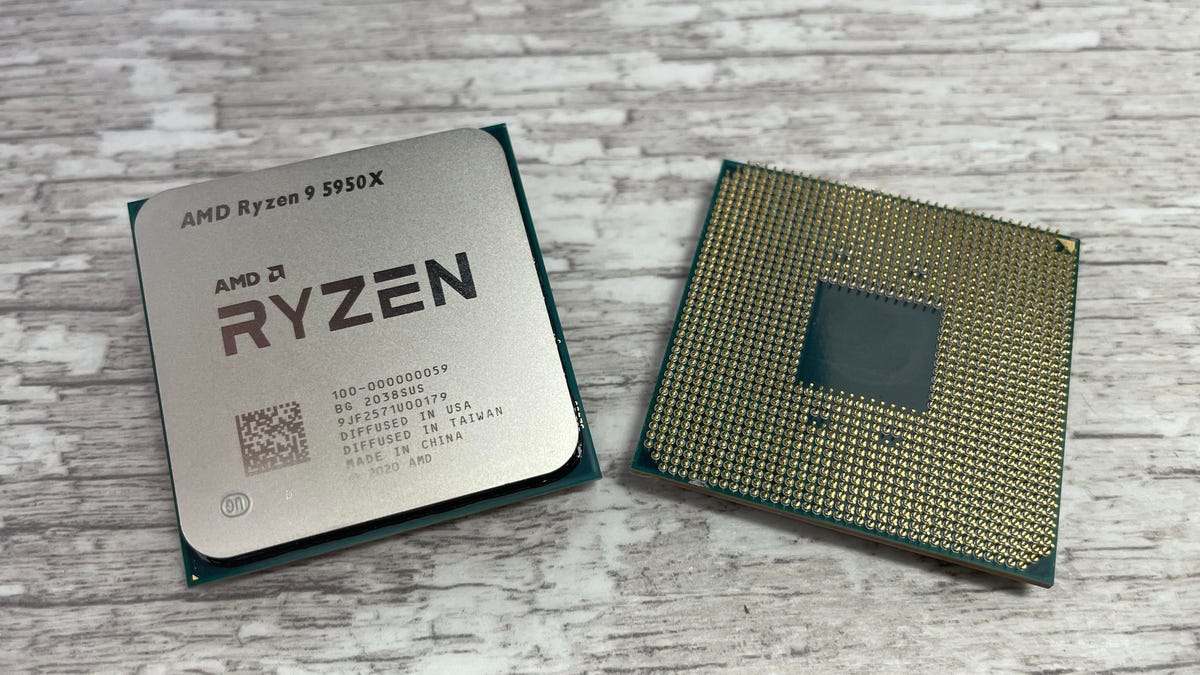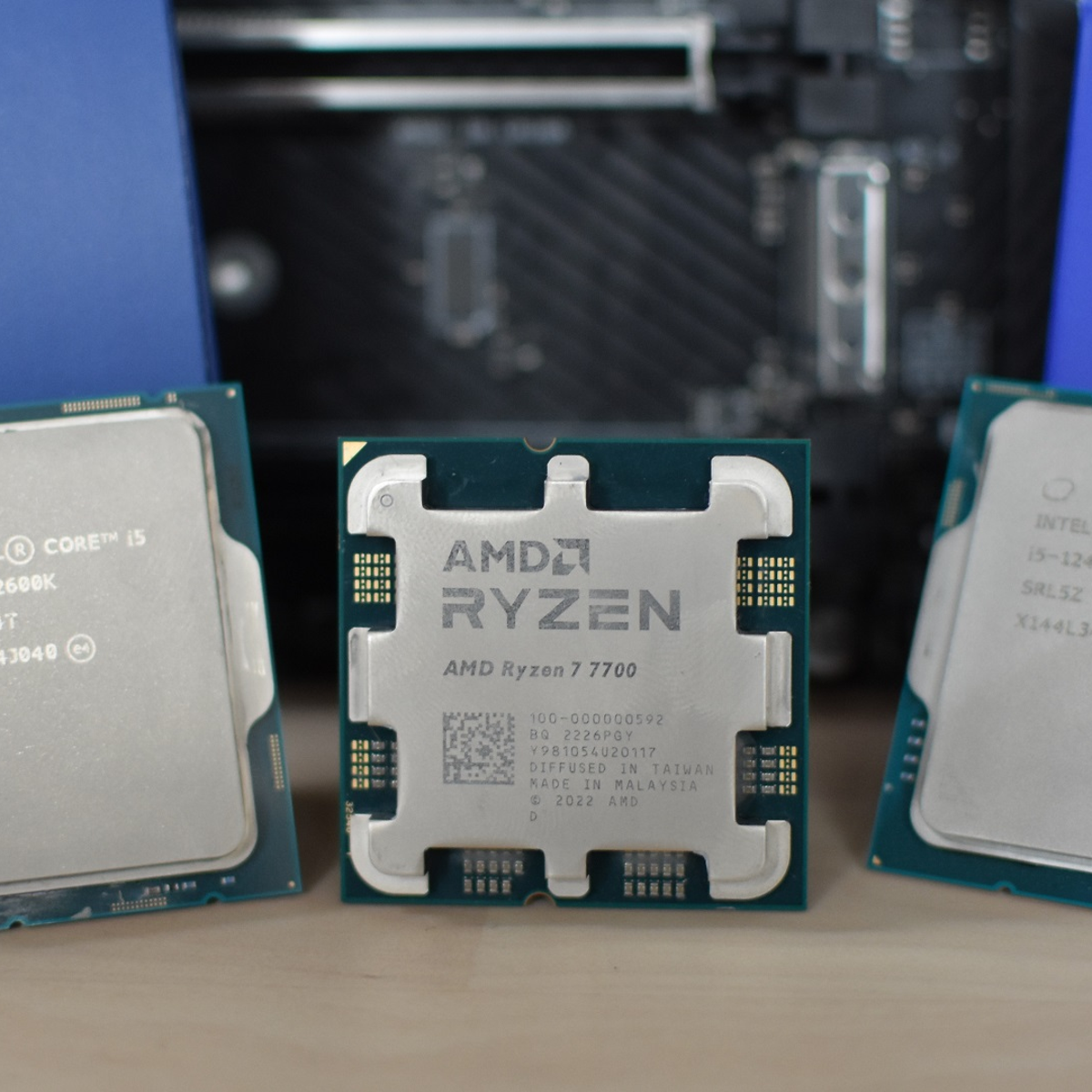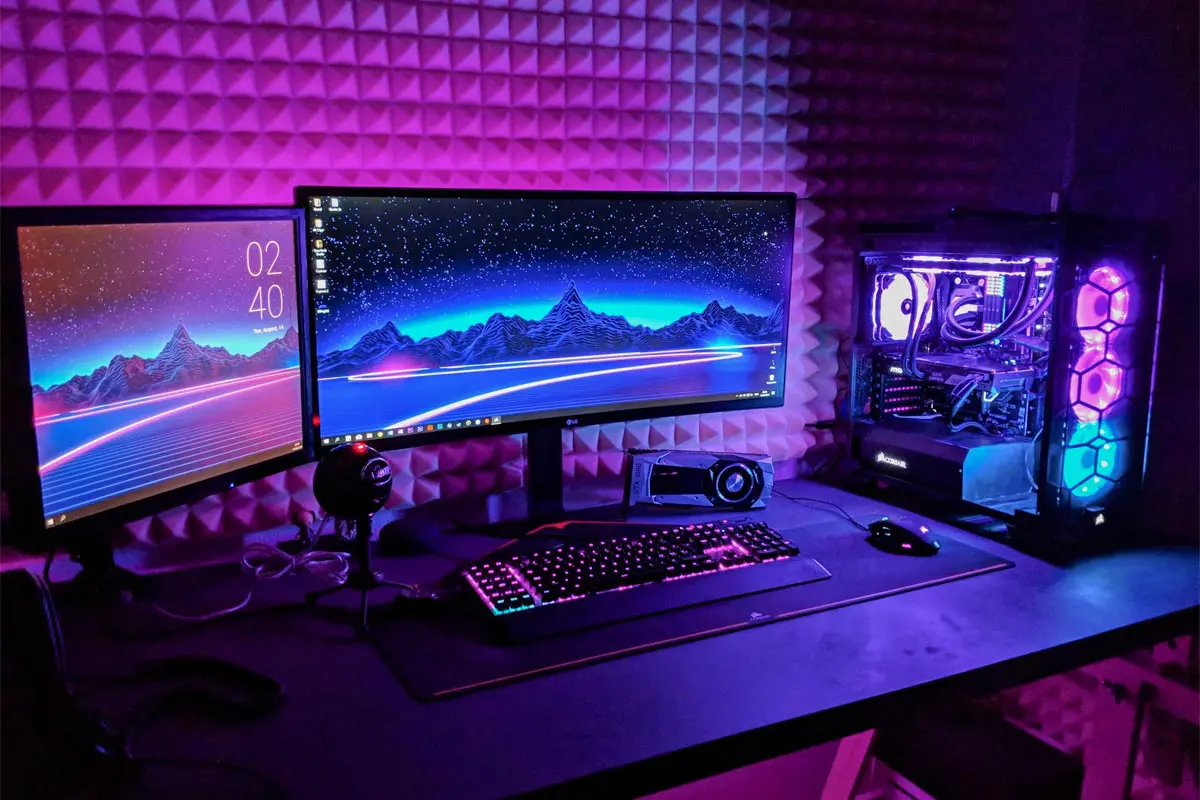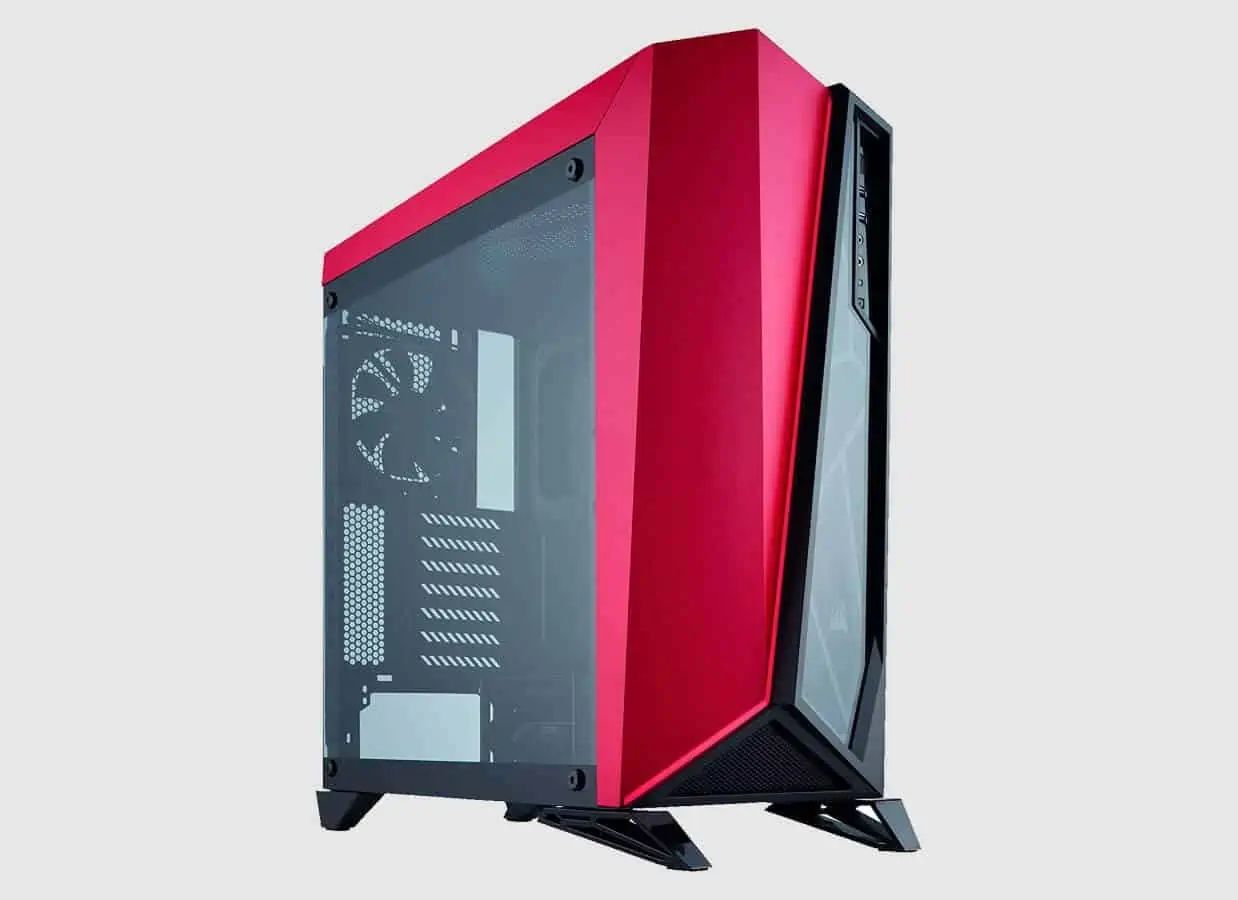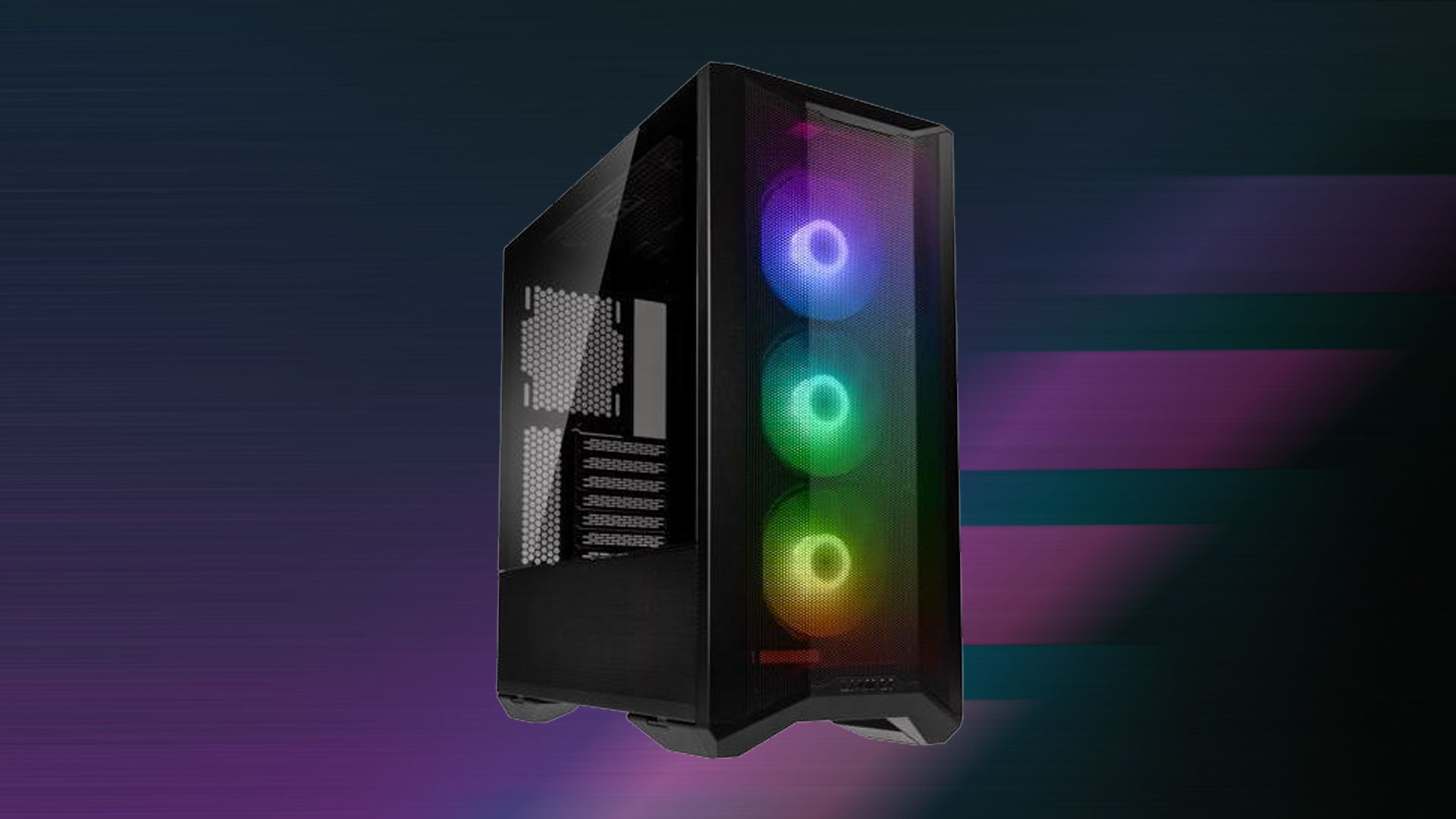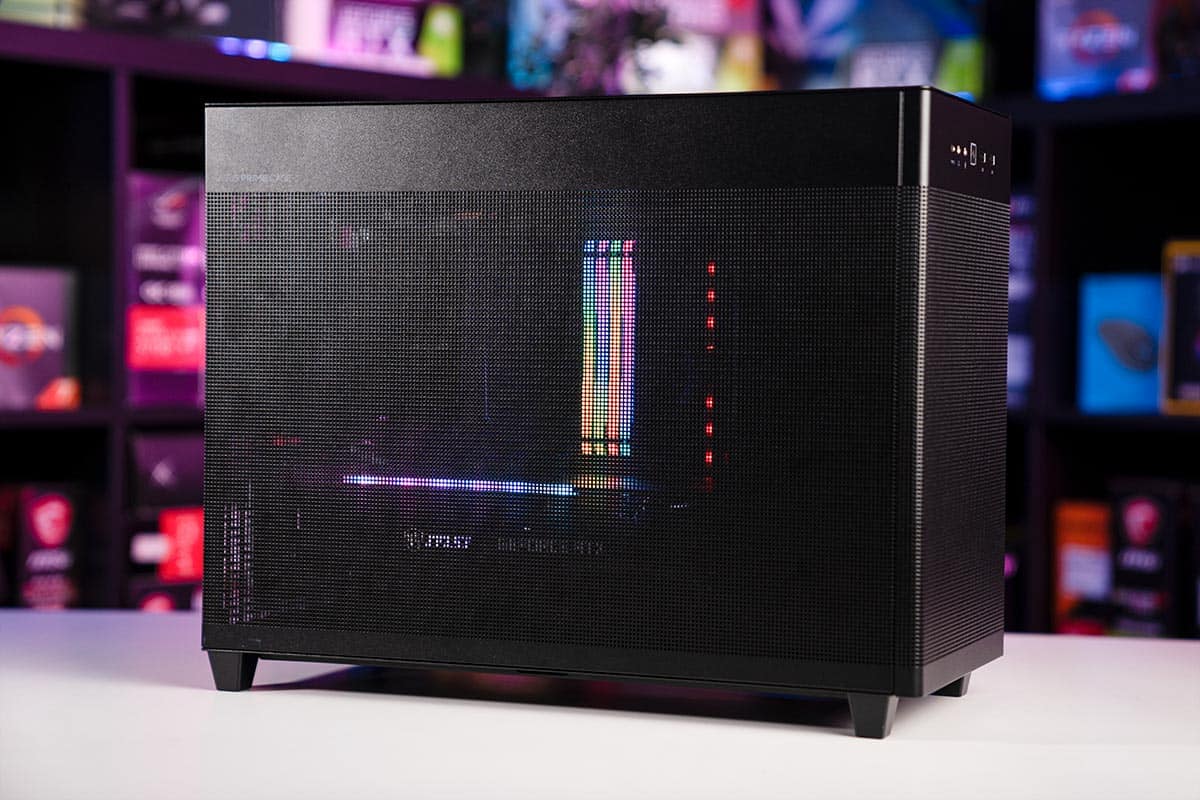Introduction
When it comes to gaming, having a well-equipped computer is essential. From powerful graphics cards to fast processors, each component plays a crucial role in delivering an immersive gaming experience. One component that often goes overlooked but is equally important is the motherboard. Serving as the backbone of your gaming rig, the motherboard not only houses all your components but also determines their compatibility and performance.
A top-quality gaming motherboard can enhance your gameplay by providing faster data transfer, better power delivery, and improved overall system stability. With a multitude of options available in the market, choosing the right motherboard for gaming can feel daunting. Factors such as socket compatibility, form factor, VRM design, expansion slots, memory support, overclocking capabilities, and audio quality all need to be considered to ensure optimal performance.
In this article, we will explore the key factors to consider when choosing a motherboard for gaming. Whether you’re a casual gamer or a hardcore enthusiast, understanding these factors will empower you to make an informed decision. Additionally, we will recommend some of the top motherboards on the market to help you get started on building your gaming rig.
Factors to Consider
When selecting a motherboard for gaming, there are several crucial factors that you should keep in mind. Each of these factors will have an impact on the overall performance and compatibility of your gaming rig. Let’s take a closer look at them:
- Socket Compatibility: The socket on the motherboard determines the type of processor that can be installed. It is crucial to choose a motherboard that supports the socket of your preferred processor, whether it’s Intel or AMD.
- Form Factor: The form factor determines the physical dimensions and layout of the motherboard. Common form factors include ATX, Micro-ATX, and Mini-ITX. Ensure that the chosen form factor is compatible with your computer case and meets your needs for expansion slots and connectivity.
- VRM Design and Power Delivery: The voltage regulator module (VRM) is responsible for supplying stable power to the CPU. A motherboard with a robust VRM design and efficient power delivery system ensures optimal performance and prevents overheating during intense gaming sessions.
- Expansion Slots and Connectivity: Consider the number and type of expansion slots available on the motherboard. These slots allow you to add additional components such as graphics cards, sound cards, and storage devices. Additionally, check the connectivity options, including USB ports, SATA ports, and M.2 slots, to ensure compatibility with your gaming peripherals and storage devices.
- Memory Support: Check the maximum memory capacity and supported memory speeds of the motherboard. This will determine the amount and performance of RAM that can be installed in your gaming system.
- Overclocking Capabilities: If you are interested in pushing your hardware to its limits for increased performance, look for a motherboard that offers robust overclocking features. These features allow you to adjust the CPU and memory frequencies for enhanced gaming and multitasking performance.
- Audio Quality: A good gaming experience involves excellent audio. Look for motherboards that provide high-quality onboard audio or support for dedicated sound cards for an immersive sound experience while gaming.
- RGB Lighting and Aesthetics: For gamers who value aesthetics, consider a motherboard that offers customizable RGB lighting options. These allow you to create a visually appealing gaming setup that matches your style and preferences.
- Price and Budget Considerations: Finally, consider your budget when selecting a gaming motherboard. Determine your needs and prioritize the factors that are most important to you, and find a motherboard that strikes the right balance between performance and affordability.
By carefully evaluating these factors and understanding their importance, you can choose a gaming motherboard that meets your requirements and ensures a smooth and enjoyable gaming experience.
Socket Compatibility
The socket compatibility of a motherboard is crucial when it comes to selecting a motherboard for gaming. The socket type determines which processors are compatible with the motherboard. The two main processor manufacturers, Intel and AMD, have their own socket types, so it’s crucial to choose a motherboard that supports the socket of your preferred processor.
For Intel processors, some common socket types include LGA 1151, LGA 1200, and LGA 2066. On the other hand, AMD processors often use socket types such as AM4 and TR4. It’s important to check the compatibility of the motherboard with the specific generation and series of your chosen processor. This will ensure that your processor fits snugly into the socket and is compatible with the motherboard’s chipset.
Upgrading your processor in the future may also be a consideration. If you plan to upgrade your processor down the line, selecting a motherboard with a chipset that supports the latest processors will provide you with more flexibility. Therefore, it’s a smart move to choose a motherboard that is compatible with the current and future generations of processors.
It’s worth noting that some motherboards may require a BIOS update to support the latest processors. Before purchasing a motherboard, check if the manufacturer provides BIOS updates that support your preferred processor. This will ensure that you can take advantage of the latest processor features, performance improvements, and bug fixes.
In summary, choosing a motherboard with the right socket compatibility ensures that your processor can be installed and function properly. It allows for optimal performance and ensures that you can easily upgrade your processor in the future if desired. Always check the socket compatibility of a motherboard before making your final decision.
Form Factor
The form factor of a motherboard refers to its physical size and layout. It determines the compatibility of the motherboard with your computer case and the available expansion slots for adding additional components. When selecting a motherboard, it’s important to consider the form factor that best suits your gaming needs.
The most common form factors for gaming motherboards are ATX, Micro-ATX, and Mini-ITX. ATX motherboards are the largest, providing ample space for expansion slots and multiple graphics cards. They are ideal for high-end gaming rigs with multiple components and require a full-sized computer case.
Micro-ATX motherboards are smaller than ATX but still offer a decent number of expansion slots and features. They are a good choice for gamers who want a balance between compactness and functionality. Micro-ATX motherboards can fit into both full-sized and compact computer cases.
Mini-ITX motherboards are the smallest form factor available. Despite their size, they still offer a good range of features and connectivity options. Mini-ITX motherboards are perfect for gamers who prioritize a compact and portable gaming system. However, due to their size, they often have fewer expansion slots and may have limited support for multiple graphics cards.
Before selecting a form factor, consider the amount of space available in your computer case and your expansion needs. If you plan on using multiple graphics cards or adding numerous components, an ATX motherboard may be the best choice. However, if you prefer a smaller and more portable gaming rig, a Micro-ATX or Mini-ITX motherboard will be more suitable.
It’s crucial to note that the form factor of the motherboard also determines the placement of various connectors and ports. Ensure that the motherboard’s form factor aligns with your preferred placement for components like USB ports, audio jacks, and expansion slots. This will make it easier for you to connect your gaming peripherals and optimize cable management within your computer case.
In summary, the form factor of a motherboard plays a significant role in determining the size and functionality of your gaming system. Consider your expansion needs, available space, and preferred port placement when selecting a form factor. Whether it’s ATX, Micro-ATX, or Mini-ITX, choose the form factor that best suits your gaming requirements and the size of your computer case.
VRM Design and Power Delivery
The VRM (Voltage Regulator Module) design and power delivery system of a motherboard are crucial factors to consider when selecting a motherboard for gaming. The VRM is responsible for converting and supplying power from the power supply unit (PSU) to the CPU.
A motherboard with a robust VRM design and efficient power delivery system ensures stable and consistent power flow to the CPU, which is essential for optimal performance, especially during intensive gaming sessions. Higher-quality VRMs with more power phases are generally more efficient and provide better power delivery to the CPU.
When it comes to VRM design, look for motherboards that feature high-quality capacitors, MOSFETs (Metal-Oxide-Semiconductor Field-Effect Transistors), and chokes. These components contribute to better power efficiency and stability, reducing the risk of voltage fluctuations that can affect system stability and performance.
Additionally, consider the amount of power the motherboard can handle. This is typically measured by the motherboard’s power phase design. A higher power phase design allows for better power management, which is particularly important for gaming systems with high-end processors or when overclocking the CPU.
Furthermore, pay attention to the power connectors on the motherboard. Some high-end motherboards offer additional power connectors, such as 8-pin or 4-pin CPU power connectors, which can provide additional power for stability, particularly when overclocking.
Another aspect to consider is the VRM heat dissipation. High-performance VRMs can generate a considerable amount of heat, especially under heavy loads. Look for motherboards with heatsinks or heat pipes over the VRM area to dissipate heat efficiently and maintain stable power delivery.
Overall, a motherboard with a robust VRM design and efficient power delivery system is essential for reliable and stable performance in gaming. A quality VRM design ensures that your CPU receives the power it needs, without any voltage fluctuations or overheating issues. When shopping for a gaming motherboard, always prioritize models with excellent VRM design and power delivery capabilities for the best gaming experience.
Expansion Slots and Connectivity
The expansion slots and connectivity options available on a motherboard play a vital role in the gaming experience. These components determine the ability to add additional hardware to your gaming rig, such as graphics cards, sound cards, storage devices, and other peripherals. So, it is crucial to consider the expansion slots and connectivity options when choosing a gaming motherboard.
One of the primary expansion slots to look for is the PCI Express (PCIe) slot. This slot is crucial for adding a dedicated graphics card, which is essential for gaming. Make sure the motherboard has the appropriate number of PCIe slots and supports the latest standards, such as PCIe 4.0, for optimal performance.
In addition to PCIe slots, consider the availability of other expansion slots, such as PCIe x1 slots and legacy expansion slots like PCI slots. These slots allow you to add additional components like sound cards, Wi-Fi adapters, or specialized expansion cards.
Connectivity options are equally important for a gaming motherboard. Look for motherboards with a sufficient number of USB ports, including both USB 3.0 and USB 3.1 Gen 2 ports. These ports ensure fast data transfer and support for gaming peripherals, such as gaming keyboards, mice, controllers, and external storage devices.
Consider the availability of other connectivity options, such as SATA ports for connecting HDDs and SSDs, M.2 slots for high-speed SSDs, and Ethernet ports for a stable and fast internet connection. Additionally, if you rely on wireless connectivity, check if the motherboard has built-in Wi-Fi and Bluetooth capabilities or if it has an M.2 slot for adding a Wi-Fi card.
It’s also worth considering audio connectivity. Look for gaming motherboards that feature high-quality onboard audio, such as Realtek ALC1220 or SupremeFX audio. These audio solutions offer excellent sound quality and support for surround sound technologies, enhancing the gaming experience.
Finally, pay attention to the position of these slots and ports on the motherboard. Ensure that they align well with your computer case and are easily accessible. This will improve cable management and make it easier to connect and disconnect peripherals without any issues.
In summary, when choosing a gaming motherboard, consider the availability and type of expansion slots and connectivity options. This will ensure that you have the flexibility to add additional hardware and peripherals to enhance your gaming experience. Choose a motherboard that offers a good balance between the number of expansion slots and connectivity options that meet your gaming needs.
Memory Support
Memory (RAM) plays a crucial role in gaming, as it affects system performance and multitasking capabilities. When choosing a gaming motherboard, it is essential to consider the memory support it offers.
Check the maximum memory capacity supported by the motherboard. Most modern gaming motherboards support up to 64GB or even 128GB of RAM. The maximum supported memory capacity ensures that you have enough room for future upgrades and can handle resource-intensive games and applications.
Another aspect to consider is the supported memory speeds. Look for a motherboard that supports the latest DDR4 memory modules and offers high memory speed support. Memory modules with higher speeds can deliver improved performance in gaming and multitasking scenarios.
Moreover, pay attention to the number of memory slots available on the motherboard. More memory slots allow for greater flexibility in terms of memory configuration and future upgrades. If you plan to use multiple memory sticks for dual-channel or quad-channel memory configurations, ensure that the motherboard has enough slots to accommodate your desired setup.
It’s also important to consider whether the motherboard supports XMP (Extreme Memory Profile) or other memory overclocking features. These features allow you to achieve higher memory speeds by activating pre-set profiles within the motherboard’s BIOS. Overclocking memory can result in improved gaming performance, although stability and compatibility should be thoroughly tested.
Lastly, look for motherboards that offer good memory slot placement, particularly if you plan on using large CPU air coolers or aftermarket cooling solutions. Low-profile memory slots or slots positioned away from the CPU socket can ensure better clearance for larger coolers.
In summary, when selecting a gaming motherboard, consider its memory support capabilities. Look for a motherboard that supports a high memory capacity, offers compatibility with the latest DDR4 memory modules, and provides the desired number of memory slots. This will allow for optimal gaming performance and future upgrade potential.
Overclocking Capabilities
Overclocking is a popular technique among gaming enthusiasts to push their hardware beyond its factory settings for increased performance. If you are interested in overclocking your CPU and memory, it’s important to choose a gaming motherboard that offers robust overclocking capabilities.
When selecting a motherboard for overclocking, consider the power delivery system. Look for motherboards with high-quality VRMs and efficient cooling solutions, such as heatsinks or heat pipes, to ensure stable power delivery and temperature management during overclocking.
Another crucial factor is the BIOS or UEFI interface. A user-friendly and feature-rich BIOS interface makes it easier to tweak and fine-tune various settings for overclocking purposes. Look for motherboards that provide comprehensive overclocking options, including voltage control, CPU multiplier adjustments, memory frequency control, and stability testing features.
Additionally, check if the motherboard supports XMP (Extreme Memory Profile) or other memory overclocking features. These features allow for easy configuration of memory settings to achieve higher memory speeds.
Consider the number and quality of fan headers on the motherboard. Overclocking generates more heat, and having sufficient fan headers allows for better cooling by adding more case fans or liquid cooling solutions. Make sure the motherboard has enough fan headers in convenient positions to support your cooling setup.
Furthermore, look for motherboards that offer advanced cooling features, such as dedicated water pump or liquid cooling headers, to simplify the installation and control of liquid cooling systems.
It’s essential to note that not all processors and memory modules can be overclocked, as it depends on their individual specifications. Therefore, ensure that your chosen CPU and memory are compatible with overclocking before investing in an overclocking-capable motherboard.
Lastly, keep in mind that overclocking may void warranties and can potentially reduce the lifespan of your hardware due to increased stress and heat generation. Proper cooling and cautious overclocking are key to maintaining system stability and longevity.
In summary, if you have a desire to push your hardware to its limits for improved gaming performance, choose a gaming motherboard with robust overclocking capabilities. Consider factors such as power delivery, BIOS interface, memory overclocking support, fan headers, and cooling features. With the right motherboard and careful overclocking practices, you can unlock the full potential of your gaming system.
Audio Quality
Audio quality is an often overlooked but essential aspect of the gaming experience. A motherboard with excellent audio capabilities can provide immersive sound quality, enhancing your gaming sessions. When selecting a gaming motherboard, consider the audio features it offers and prioritize high-quality audio solutions.
Many gaming motherboards feature onboard audio, utilizing codecs from manufacturers like Realtek or SupremeFX. Look for motherboards that offer higher-end audio codecs, such as Realtek ALC1220 or similar solutions, as they provide superior sound quality with minimal distortion.
Additionally, pay attention to the motherboard’s audio outputs and connectors. Look for motherboards that offer dedicated audio outputs such as optical or coaxial S/PDIF, as these can provide better audio fidelity when connecting to high-end audio systems or gaming headphones with optical inputs.
Consider the number of audio jacks available on the motherboard. More audio jacks allow for greater versatility, enabling you to connect surround sound speaker systems or gaming headsets with separate audio and microphone jacks.
Some gaming motherboards also come equipped with specialized audio features such as isolated audio circuits or premium capacitors. These features contribute to reducing electronic interference and delivering cleaner audio signals, resulting in improved sound quality.
If you prioritize audio customization and enhancement, look for motherboards that offer software suites with advanced audio settings. These software packages often provide features like equalizers, sound enhancements, and virtual surround sound, allowing you to fine-tune the audio output to suit your preferences and gaming needs.
For the ultimate audio experience, you might consider adding a dedicated sound card to your gaming system. Certain motherboards have PCIe slots specifically designed for sound cards, enabling you to upgrade your audio capabilities further.
Lastly, remember that the quality of speakers or headphones you use also contributes to the overall sound experience. Investing in high-quality audio peripherals will maximize the benefits of a motherboard with excellent audio capabilities.
In summary, audio quality should not be overlooked when selecting a gaming motherboard. Look for motherboards with high-quality onboard audio codecs, dedicated audio outputs, a sufficient number of audio jacks, and additional audio features. By choosing a motherboard that prioritizes audio quality, you can enjoy a more immersive and captivating gaming experience.
RGB Lighting and Aesthetics
RGB lighting has become a popular feature in gaming setups, creating an aesthetically pleasing and customizable environment. When choosing a gaming motherboard, considering the RGB lighting options and overall aesthetics can add a touch of personalization to your gaming rig.
Many gaming motherboards feature built-in RGB lighting, allowing you to customize the lighting effects and colors to match your preference or gaming setup theme. Look for motherboards that offer intuitive RGB control software, providing you with a wide range of customization options. Some software even syncs the RGB lighting with other compatible components, such as RGB fans, CPU coolers, and RAM modules, for a cohesive look.
Consider the placement of RGB lighting on the motherboard. Look for designs that feature lighting on key elements like heatsinks, VRM covers, or chipset covers, as it adds an attractive visual element to your gaming system. Choose a motherboard that aligns with your desired aesthetic, whether it’s a sleek and minimalist look or a bold and vibrant RGB showcase.
Some gaming motherboards also feature onboard RGB headers or connectors, allowing you to connect additional RGB components, such as LED strips or RGB fans, for even more customization options. Check the number and type of RGB headers supported by the motherboard to ensure compatibility with your desired RGB components.
Additionally, consider the overall color scheme and design of the motherboard. Some motherboards feature unique and eye-catching designs, such as futuristic patterns or themed graphics, which can add an extra level of visual appeal to your gaming setup.
While RGB lighting and aesthetics are subjective preferences, they can greatly enhance the overall gaming experience by creating an immersive and visually engaging environment. However, it’s important to strike a balance between aesthetics and functionality. Ensure that the motherboard you choose meets all your technical requirements while also satisfying your desire for a visually appealing gaming rig.
In summary, when selecting a gaming motherboard, consider the RGB lighting options, overall aesthetics, and design elements that align with your personal style. Look for motherboards that offer customizable RGB lighting, intuitive control software, and support for additional RGB components. By choosing a motherboard that enhances the visual aspect of your gaming setup, you can create a unique and personalized gaming experience.
Price and Budget Considerations
Price and budget are important factors to consider when selecting a gaming motherboard. Setting a budget and understanding your needs will help you find a motherboard that offers the right balance of features and performance without breaking the bank.
Firstly, determine your budget and allocate a reasonable amount for the motherboard. Consider the overall cost of your gaming system and allocate a portion of your budget specifically for the motherboard. This will prevent overspending and ensure that you have enough funds for other essential components, such as the CPU and graphics card.
Next, prioritize the features and specifications that are most important to you. Focus on the factors that directly impact your gaming experience, such as socket compatibility, VRM design, expansion slots, and memory support. By identifying your priorities, you can make informed decisions and avoid spending on unnecessary features that don’t contribute significantly to your gaming performance.
Research and compare different motherboard models within your budget range. Consider reviews, user feedback, and expert opinions to gauge the performance, reliability, and value of each motherboard option. This will help you identify the best motherboard that meets your needs while staying within your budget constraints.
Keep in mind that higher-priced motherboards often offer additional features, such as premium audio solutions, advanced overclocking capabilities, or extensive RGB lighting options. If these features are important to you, it may be worth investing a bit more in a higher-end motherboard. However, if you are on a tight budget, don’t be tempted to overspend on features you will not utilize.
Lastly, consider the warranty and customer support provided by the motherboard manufacturer. A longer warranty period and reliable customer support can offer peace of mind and assistance in case of any issues or failures with the motherboard.
In summary, determining your budget, prioritizing essential features, and conducting thorough research will help you find a gaming motherboard that offers the best value for your money. By balancing your budget considerations with your gaming needs, you can make an informed decision and build a gaming system that meets your expectations without overstretching your financial resources.
Top Motherboards for Gaming
Choosing the right motherboard for gaming can be a daunting task given the wide range of options available. To help narrow down your choices, here are some top motherboards that are highly regarded for their performance, features, and overall value for gamers:
- ASUS ROG Strix Z590-E Gaming: This ATX motherboard supports the latest Intel processors and features robust power delivery, PCIe 4.0 support, and excellent thermal management. It also boasts extensive connectivity options, including USB 3.2 Gen 2, Wi-Fi 6, and Bluetooth 5.1.
- GIGABYTE B550 AORUS Pro AC: Perfect for AMD enthusiasts, this ATX motherboard supports Ryzen processors, offers PCIe 4.0 support, and features a solid power delivery system. It also comes with comprehensive connectivity options, including USB 3.2 Gen 2, Wi-Fi 6, and Bluetooth 5.0.
- MSI MPG X570 Gaming Edge Wi-Fi: This ATX motherboard supports AMD Ryzen processors and offers PCIe 4.0 support. It features a robust power delivery system, excellent connectivity options, including USB 3.2 Gen 2, Wi-Fi 6, and Bluetooth 5.0, and comes with stylish RGB lighting.
- ASUS TUF Gaming B460-PRO Wi-Fi: If you’re on a budget, this ATX motherboard offers great value. It supports Intel processors, features solid power delivery, and offers USB 3.2 Gen 2 and Wi-Fi 6 connectivity. Despite its affordability, it still provides reliable performance for gaming.
- ASRock B550M-ITX/ac: This Mini-ITX motherboard is ideal for compact gaming systems. It supports AMD Ryzen processors, offers PCIe 4.0 support, and comes with Wi-Fi 6 and Bluetooth 5.0 connectivity. Despite its small size, it doesn’t compromise on performance.
These are just a few examples of the top motherboards for gaming, and different models may suit different gaming needs and budgets. It’s essential to consider your specific requirements, such as processor compatibility, form factor, and desired features, when selecting a motherboard. Always conduct thorough research, read reviews, and compare different options to find the best motherboard that meets your gaming needs and offers the best value for your investment.
Conclusion
Choosing the right motherboard is a crucial step in building a gaming rig that delivers optimal performance and a seamless gaming experience. From socket compatibility and form factor to VRM design and power delivery, each factor plays a significant role in determining the motherboard’s suitability for gaming.
Consider your specific gaming needs and budget when evaluating different motherboards. Prioritize factors like expansion slots, connectivity options, memory support, overclocking capabilities, audio quality, and aesthetics based on your preferences and requirements. By understanding these factors and their impact on gaming performance, you can make an informed decision that aligns with your needs.
Keep in mind that the top-rated motherboards mentioned in this article are just a starting point. There are many other great motherboards available, and it’s important to do thorough research and read reviews to find the best fit for your specific gaming setup.
Remember to balance your budget with your desired features and options. It’s always wise to invest in a high-quality motherboard that provides solid performance and essential features, even if it means making trade-offs in some areas.
Ultimately, the right motherboard will serve as the foundation for your gaming rig, supporting your processor, memory, and other components. By selecting a motherboard that meets your gaming needs and aligns with your preferences, you can create a powerful gaming system that brings your favorite games to life.







